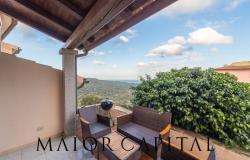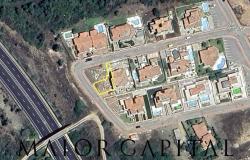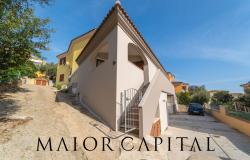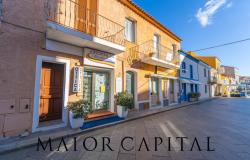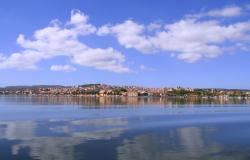 A Milanese industrial consultant, who packed in his highly paid job for a life of rural tranquillity, is now on a crusade to save Sardinia's dwindling donkey population from extinction.
A Milanese industrial consultant, who packed in his highly paid job for a life of rural tranquillity, is now on a crusade to save Sardinia's dwindling donkey population from extinction.
Giorgio Mazzucchetti fell in love with the tiny island of San Pietro off the southwest coast of Sardinia over a decade ago but has only been living there for the last three years.
Mazzucchetti, who holds degrees in chemistry and agriculture, has always had a passion for animals at risk of extinction but since moving to San Pietro, the fate of the Sardinian donkey has become his life's work.
Together with his wife Cristina and their twins, Ginevra and Matteo, they have converted and extended an abandoned patch of land into a home both for themselves and the donkeys. An original plan to raise ostriches fell by the wayside when he realized this would entail killing them for their meat, so he switched his sights to the Sardinian donkey. "Throughout Sardinia, there are probably around 150 animals left," he said.
"There may be a few more living in the mountains but the risk of extinction is still worryingly high, even though the Sardinian variety is disease resistant and requires little food or water".
There was once a thriving "asinello sardo" population scattered across Sardinia and its satellite islands. But this has plummeted due to the growth in motor transport, combined with the popularity of the animal's tender white meat. Another problem is that the donkeys are very slow to reproduce, with pregnancies lasting around 11 months on average.
"We're working to boost the number of animals living here and we're in constant contact with other breeders," he said.
Mazzucchetti's long-term ambition is to repopulate the island of Asinara off the northwest coast of Sardinia. A penal colony located here for over a century was closed down some years back but the nature reserve that replaced it has failed to revive the donkey population. "There are now almost none left and those there are, have been abandoned and have cross-bred with other species," said Mazzucchetti. "If anything, the situation has deteriorated since the prison closed and the island became a nature reserve".
Mazzucchetti receives no official financing for his sanctuary, which he funds with the occasional freelance consultancy job in Milan. Donations from visitors who stumble across his donkey haven in the hills en route to a nearby beach also help.
"Every now and again I manage to sell a pair, as donkeys interact well with humans and are much in demand for parks or gardens," he added. "Unfortunately they always end up being transported outside the region". The asinello sardo is a descendant of donkeys that were originally native to Egypt. They were introduced to Sardinia in the third millennium BC and have changed and adapted to the local climate and conditions over the centuries.
There are eight different varieties of donkey in Italy but the pale asinello sardo, together with its Albino cousin, the asinara, are those most at risk of extinction.
